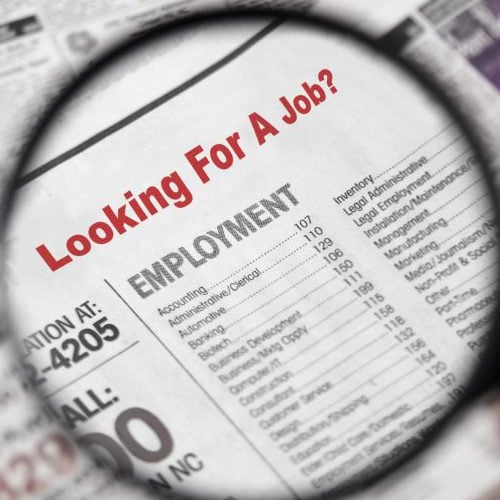Jobs
A Week of Continued Strong Jobs Data Pushes Chances of Fed Rate Hike in March

Published:
Last Updated:

Maybe all that post-election economic hope and all the day in and day out record highs on the Dow Jones Industrial Average and in the S&P 500 Index had some meat to it after all. Ahead of Friday’s key employment report from the Labor Department, there has been almost nothing but incredibly strong data on the job market. The strength has even been strong enough that it now seems almost certain that Chair Janet Yellen and the Federal Reserve’s Federal Open Market Committee (FOMC) will raise interest rates in the coming week.
The week of March 6 to March 10 has brought on numerous strong reports about the economy.
The Gallup U.S. Consumer Spending Measure rose to an average of $101 in February. Bloomberg reported that this was the highest average for the month of February back to 2008 (was at $106 then). This figure is up from $88 in January but lower than the $105 for December’s big holiday-induced month.
The largest number of the week so far has been the ADP private payrolls report. ADP reported that payrolls grew by a whopping 298,000 in February, shockingly higher than the 183,000 consensus by Bloomberg and still far higher than the highest economist estimate of 215,000. January’s strength was even tweaked higher as the original report of 246,000 was revised to 261,000.
Thursday’s reading on the Challenger Job-Cut Report signaled that layoffs remain quite low. February’s layoffs were just 36,957 (versus a prior monthly report of 45,934). Layoffs are often high for the retail sector after the holidays, and the troubled retail segment led that way in February. Layoffs were also still seen in energy.
Thursday’s weekly jobless claims report was the final government release from the Department of Labor ahead of Friday’s unemployment report. Jobless claims in the week of March 4 were 243,000. Bloomberg was calling for 238,000, versus a 223,000 prior week reading. While this report is higher than a week ago, this has set a modern record for how long the claims have been under 300,000.
Gallup also released another report on Thursday called the Gallup Good Jobs Rate. Bloomberg reported on this report as follows:
The Gallup Good Jobs (GGJ) rate in the U.S. was 44.4 percent in February, down slightly from 44.8 percent in January. This is also down a bit from February 2016, when the U.S. GGJ rate was 44.6 percent. For perspective, when Gallup first measured the GGJ rate in January 2010 unemployment was still high coming out of the 2007-2009 recession (10.9 percent). GGJ fell as low as 41.7 percent in February 2011, but improved over the next few months. The highest monthly GGJ rate was 47.1 percent in July 2016.
Friday’s expectations for payrolls have to be ticking higher. Bloomberg’s consensus is now up at 200,000 for February’s nonfarm payrolls and 200,000 for the private sector payrolls. Unemployment is expected to tick lower to 4.7% from 4.8%.
Other key data from the month of January showed the following:
Want retirement to come a few years earlier than you’d planned? Or are you ready to retire now, but want an extra set of eyes on your finances?
Now you can speak with up to 3 financial experts in your area for FREE. By simply clicking here you can begin to match with financial professionals who can help you build your plan to retire early. And the best part? The first conversation with them is free.
Click here to match with up to 3 financial pros who would be excited to help you make financial decisions.
Thank you for reading! Have some feedback for us?
Contact the 24/7 Wall St. editorial team.